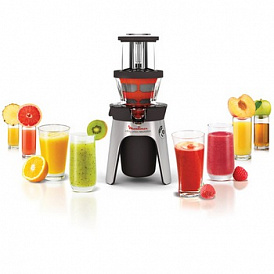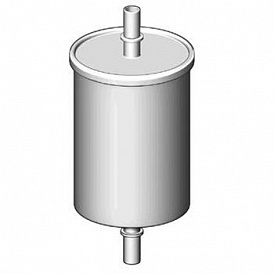How to choose a steamer for clothes
The sender is a device for smoothing and "refreshing" clothes. It is not a complete alternative for the iron, but is very practical when caring for delicate fabrics.
content
- What to look for when choosing
- Types of steamers for clothes
- What clothes steamer to choose
- Main selection criteria
- Additional selection criteria
- How much are steamers for clothes
- The best manufacturers of steamers for clothes - which company to choose
- Steamer Video for Clothes
How to choose a steamer for clothes: what to look for
When choosing a steamer for clothes, consider the following parameters:
-
Device type;
-
Power;
-
Water tank capacity;
-
Possibility of horizontal steam;
-
Ironing material;
-
Water requirements;
-
Additional features;
-
Contents of delivery.
-
The manufacturer is also important.
Types of steamers for clothes
In terms of design and scope of use, steamers for clothing are divided into three types:
-
Manual;
-
Outdoor;
-
Combined.
Hand Steamers

Hand-held steamers are compact devices that are mainly designed for taking care of clothes away from home: on business trips, on trips, etc. They are indispensable in situations where you need to quickly put in rumpled things.
Virtues
-
Compactness, small size;
-
Ability to work on battery.
disadvantages
-
Low power;
-
Often, manual steamers are suitable for handling 1-2 items of clothing. But they are not intended to handle the entire wardrobe;
-
Small volume of water tank;
Floor Steamers

Floor steamers are equipped with a large water tank and increased power, making it suitable for handling increased amounts of clothing.
Virtues
-
Can handle several items of clothing per cycle of use;
-
Have a heating element of increased power;
-
Models with vapor pressure can process dense fabrics.
disadvantages
-
High current consumption;
-
Not suitable for use away from home.
Floor steamers are of two types - self-flowing and with vapor pressure.
Self-flowing floor steamers

Self-flowing floor steamers are structurally and from the point of view of technology of use they are a kind of electric kettle. Water poured into the container heats up to boil. After that, the steam is connected to the iron by the attached tube, which is used to process the clothes. Self-flowing floor steamers are suitable for working with thin and light fabrics, as well as processing curtains and other decorative fabric elements.
Virtues
-
Low price;
-
Simple and reliable design.
disadvantages
-
Not suitable for processing dense materials;
-
Non-constant steam pressure.
Steam pressure steamers

Steam pressure steamers are suitable for processing dense fabrics, that is, they can be used to "refresh" jackets, jeans, and even upholstered furniture. Their design includes a special drive that provides a high intensity of hot air flow.
Floor steamer with steam pressure is a good solution for cleaning and processing clothes made of thick fabrics. But because of the short duration of the “intensive mode”, they are hardly suitable for cleaning the entire wardrobe.
Virtues
-
Can process both thin, and dense fabrics;
-
Suitable for processing upholstered furniture.
disadvantages
-
Non-constant steam pressure. In the intensive flow mode, the device is able to work for only a few minutes, after which it becomes “drift-free”;
-
The complexity of the design, which leads to some unreliability;
-
High demands on the quality of the poured water;
Combined Steamers

If hand and floor steamers are designed for easy handling of clothes (including refreshing and smoothing small folds), then the combined ones are suitable even for removing dirt. In the overwhelming majority of cases, these are either steam cleaners with a steam function, or steamers with a steam cleaner function. But regardless of the type of device, they are characterized by high intensity.
Combined steamers are suitable for people who need not only to refresh clothes, but also to clean them from various contaminants. And they will also be an excellent solution for the care of upholstered furniture.
Virtues
-
High steaming intensity (flow pressure over 3 bar, density over 70 grams per minute);
-
Possibility of use for cleaning clothes;
-
Ability to use with thick fabrics and upholstered furniture;
disadvantages
-
High price;
-
High demands on the quality of the poured water;
-
Large size.
What clothes steamer to choose
When choosing a steamer for clothes, first of all consider the intended use and revise the wardrobe:
-
If you want to maintain a flawless appearance even on a business trip, a manual steamer would be the ideal solution;
-
If the wardrobe is mainly used for clothes made of light fabrics, you should buy a gravity-type floor otparivatel;
-
If you plan to steam jeans, jackets, coats and other clothes made of thick fabrics, a model with steam pressure will do;
-
If you plan to clean the curtains and draperies - floor gravity;
-
If you plan to clean upholstered furniture - floor with steam pressure or combined;
-
If it is planned not only to refresh clothes, but also to remove contamination from them - a combined one.
-
A universal solution is floor standing with steam pressure, however it is not suitable for use outside the home.
Main selection criteria

The main parameters that determine the operational and practical qualities of the steamer are:
-
Power;
-
Vapor pressure;
-
Water tank capacity;
-
Possibility of horizontal steam;
-
Equipment.
Power
The power of the steamer determines two parameters - the speed of start (boiling water) and the intensity of steam. The performance of the heating element affects the first characteristic. The intensity of the steam is determined by the drive power and is measured in the pressure of the stream of hot air.
Typically, the technical specifications of the steamer indicate the power consumed, not the effective power. These parameters are in most cases interrelated. The higher the power consumption of the steamer, the greater and more efficient.
Steamers with a capacity of 1-1.5 kW are quite suitable for the care of thin and light fabrics. If processing of dense materials or upholstered furniture is required, it is recommended to choose models with a capacity of 1.5-2 kW.
Also, the higher the volume of the tank, the greater must be the capacity of the steamer. For example, for models with a container capacity for liquids up to 0.2 liters, heaters with a capacity of up to 1 kW are quite suitable. But for devices with a 2.5-liter tank, it is better to choose steamers designed for 2 kW and above.
Practical implementation is manifested in the intensity of steam supply. The higher it is (measured in grams per minute), the better. For example, steamers for 30 g / min will cope only with the most airy laces, and for 70 g / min - thick jeans will be easily refreshed.
Vapor pressure
A parameter that determines the practical properties of steamers. If its value is less than 1 bar, the flow of hot air will be able to penetrate extremely thin fabrics.
Devices with a vapor pressure of about 2 bar are suitable for cleaning and refreshing fairly dense fabrics, but still can not cope with jeans or tweed. Such materials will require a steamer of 3 bar or more.
Water tank capacity
The lower the volume of the tank, the less clothing can be steamed for one cycle of work. Thus, portable devices designed for less than 0.2 liters can handle only one item of clothing - for example, a shirt.
But, at the same time, the higher the volume of the tank - the greater the dimensions of the device. Therefore, for portable steamers, the optimal tank capacity is from 0.3 to 0.5 l. But the floor can be equipped with a large tank - more than 1 l.
Possibility of horizontal steam
This is an important selection criterion for handheld and combination steamers. Floor can usually work in any position ironing.
Nevertheless, if the purpose of the purchase of the steamer is simply to refresh the clothes or to smooth out the folds on it, then this function is not needed. These processes are most effective when a shirt or pants hang loose.
However, if you plan to handle lying horizontally clothes or surfaces of upholstered furniture, it is desirable to choose models that support the work in this mode.
Equipment
The most important additional nozzles for steamers are the brush and clamp. The first is designed to clean the dirt from the surface of the fabric. The clamp allows you to put arrows on your trousers (more precisely, update them, since new ones are created exclusively by an iron).
Additional selection criteria

Among the additional parameters that affect the performance of the device, can be identified:
-
Battery life;
-
The presence of heating iron;
-
Requirements for water used;
-
Intensity adjustment;
-
Automatic shutdown;
-
The possibility of adding water without turning off the device.
Battery life for a handheld portable steamer, if not specified by the manufacturer, calculated from the flow rate and the volume of the water tank. The higher it is, the better.
Presence of heating ironing allows you to get rid of the appearance of droplets (condensate) on its surface and therefore provides a better steaming without wetting the clothes.
Requirements for water used usually indicated in the instructions to the steamer. Most models of the middle and upper price range can work with any liquid. At the same time, some steamers support the use of purified or even distilled water only.
Since distilled water at home and on a business trip is quite difficult to get, it is worthwhile to clarify the compatibility with “ordinary liquid” in advance.
Intensity adjustment - useful feature. Although, judging by the user reviews, most use only one mode - the maximum. If the steamer supports several intensity modes, it is desirable that their regulator be on the handle of the device.
Auto power off makes use of the steamer safer. So, the device can be turned off after some time of inactivity or by emptying the water tank.In both cases, this not only prolongs the operating period of the steamer, but also reduces the risk of spontaneous combustion.
The possibility of adding water without shutting down the device - a very useful and important function, both for manual and for floor steamers. But it is practical only if you plan to handle a large amount of clothing.
How much are steamers for clothes
The cost of the steamer depends on its type, capacity and volume of the tank.
-
So, the prices for hand otparivateli begin from several hundred rubles, but the vast majority of models are in the price range of 1-2 thousand rubles.
-
The price for floor steamers starts from 2 thousand rubles, the vast majority of models are in the price range of 4-7 thousand rubles.
-
Prices for combined steamers start at 3-4 thousand rubles, most models are in the price range of 8-15 thousand rubles.
The best manufacturers of steamers for clothes - which company to choose
Among the manufacturers of steamers are the following companies:
-
MIE - specializes in the production of such technology, therefore, the models developed by it are practical, high quality and durable;
-
Kitfort is a manufacturer of small household appliances. It also produces high-quality steamers of the middle price range;
-
Grand Master is a domestic manufacturer of equipment for the service sector. Products are expensive but high quality;
-
Philips, Polaris, UNIT - manufacturers of high-quality steamers of the middle and budget price segment.
-
You can also select the company Zimber, which produces ultrabudgetary, but practical steamers.
In the following articles we tell how to choose a steam cleaner for home and secrets iron selection for home.
Steamer Video for Clothes
Attention! This material is the subjective opinion of the authors of the project and is not a guide to purchase.














